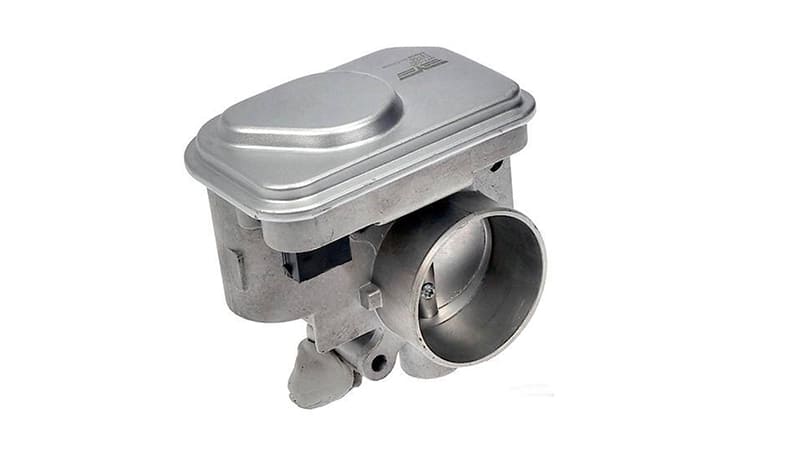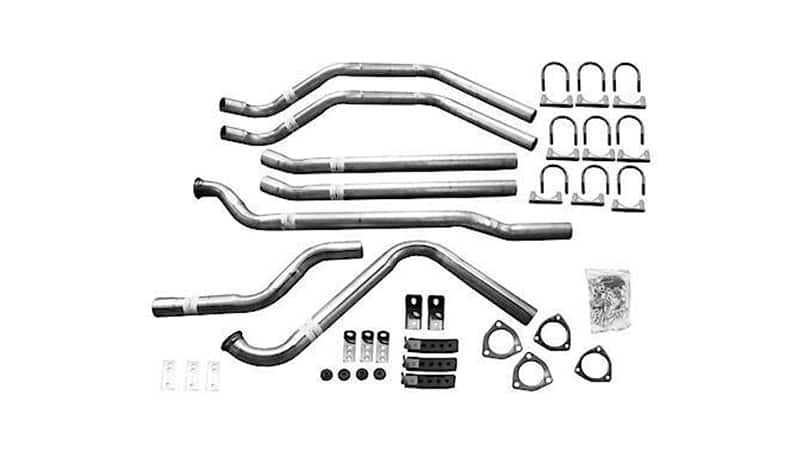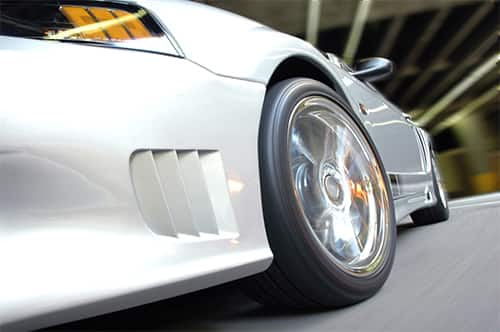An elite athlete's ability to rapidly breathe allows them to perform better, and the same goes for your car's engine. Whether you drive a '69 Chevelle or an '09 Civic, the principle still applies. Get more air in and out, and your engine will make more power. This is why forced induction (like turbocharging and supercharging) is so popular as a means for, literally, pumping up an engine's output. These modifications aren't cheap, though, and can easily cost 5,000 dollars and up.
But there are plenty of other ways to increase your vehicle's horsepower without getting up to your eyeballs in debt. Consider these mods that will give you the best bang for your buck.
Upgrade the air intake
Going with a less-restrictive air filter setup than a factory-supplied one has long been a staple of performance enthusiasts. Those who own an old American car from the '60s and '70s typically favor a round, open-element air cleaner that sits over that carburetor.
Some classic muscle cars came standard with these types of filters or even trick hood scoops that funneled the colder outside air to the intake. More often than not, these have a closed housing that breathes through a snorkel-like fixture sticking out of the side.
Other options for those golden oldies include Edelbrock's iconic, triangular “Pro-Flo 1000" (formerly known as the “Lynx") open-element filter.
When fuel injection became widespread in the '80s, air filter assemblies took on more complex configurations that continue to this day. The latter is due chiefly to being equipped with various sensors that keep tabs on things like intake air temperature and velocity, so a modern car's on-board computer can adjust fuel metering accordingly.
Most standard air filters are buried within black plastic boxes, but the aftermarket quickly came to the rescue with low-restriction, cold-air kits that often feature a semi-conical, open-element filter.
K&N in particular makes well-engineered kits that are known for their high quality and wide range of applications. Plus, K&N dyno tests each kit so you know exactly how much horsepower/torque gain you can expect out of the box for your specific vehicle.
Install a larger throttle body
Still on the topic of “more air equals more horsepower," moving to a larger throttle body is another economical way to boost power — kind of.
Installing a bigger throttle body won't directly increase horsepower. What it will do is support the addition of more horsepower based on modifications you've already made or are thinking about making.
Think of it this way — if you put a lot of time, money and sweat into engine modifications that significantly increase horsepower, but don't move to a larger throttle body, those mods are negated by a now-undersized part that can't handle the increased air and fuel volumes.
The one place you'll definitely notice the difference a larger throttle body makes is on the starting line, as throttle response will be greatly improved.
Following a similar line of thinking, a perennial favorite when it comes to upgrades is the addition of a performance intake manifold. Less restriction plus more air and fuel reaching each cylinder equate to more horses.
Cat-back exhaust systems
Now that your engine can inhale more deeply, it's time to turn your attention to the exhaling side of the equation — the exhaust.
Before model year 1975, when catalytic converters (“cats" for short) came on the scene to clean up exhaust emissions, the default performance-enhancing setup was pretty straightforward. Exhaust headers ran to true dual exhausts with a crossover. Nowadays, the ideal setup is pretty much the same, albeit with high-flow cats plumbed into the system.
Still, going with a full engine-to-tailpipes system can be rather complicated (ask anybody who's installed headers) and expensive. Plus, that labor is probably beyond what most shade-tree wrenches can do. The good news is you don't have to go that far. Those looking for a cost-effective and minimal hassle upgrade should consider a “cat-back" exhaust system. It is just that — a system that bolts on after your car's catalytic converter(s). With freer-flowing pipes and lower-restriction muffler(s), a cat-back exhaust system lets your engine exhale easier and sounds pretty cool in the process.
Regardless of what you drive, there are plenty of great choices for a cat-back system. Popular brands include Dynomax and Magnaflow. Even within each manufacturer's product line, there's great variety sonically speaking.
You've got systems that are fairly quiet at idle and part throttle, then growl gratifyingly when you step into it. And then you've got the more aggressive setups that proudly make their presence known whether you're burbling at a light on the boulevard or grabbing gears as you rocket up a freeway on-ramp. Those juicy, aggressive sounds are easy to come by if you know where to look.
Start here with the Thrush two-chamber welded muffler.
Use a performance tuner to change vehicle software
Software in newer vehicles controls virtually everything — brakes, engine timing, driver alerts, fuel mileage, etc. The great thing is, you can hack into that software and alter some factory settings, essentially inserting yourself between the engine and the engine control unit (ECU). With a few tweaks, you can get more power under the hood. It won't be a lot, but every little bit makes a difference, right?
This process seems to get easier as the technology continues to develop. The more challenging options to alter software – removing the vehicle's computer and sending it somewhere to be reprogrammed or pulling the factory chip from the ECU and plugging in a new one – still work, but there's now an easier way.
Simply plug a performance tuner into the vehicle's OBD port, and in seconds you'll be on your way to adjusting air-fuel ratios, injector flow rates and increasing horsepower. There are also other tuners or modules available that are designed for more permanent modifications, mounting directly into your vehicle's wiring system.
Tackling any of these projects in the near future? Leave us a comment to let us know how it went.













